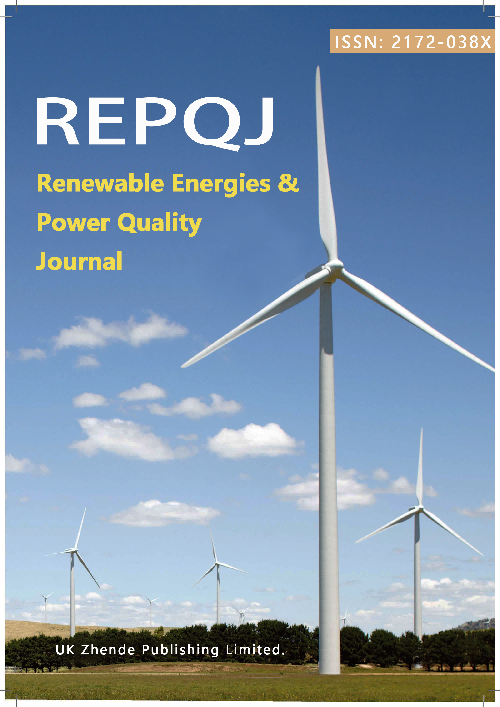Study on Cooperative Optimisation Method for PCI Allocation in Power Load Management Communication Networks
DOI:
https://doi.org/10.52152/4164Keywords:
5G communication networks, PCI planning optimization, Improved genetic algorithm, PageRank-based weightingAbstract
With the rapid development of next-generation power systems, the complexity of load scheduling management for high-energy consumers in industrial parks has intensified, particularly under multi-stakeholder coordination challenges. Addressing the research gap in comprehensive optimisation of PCI conflicts, configuration ambiguities, and mod 3 interference within 5G New Radio (NR) environments, this study proposes a collaborative optimisation-based PCI allocation methodology. Incorporating PageRank values as weighting factors, a multi-objective model quantifies base station interference correlations. High-dimensional constraints are linearised via the Big-M method, while an enhanced genetic algorithm integrates greedy strategies, fixed indexing, and neighbourhood search to overcome local optima. Results demonstrate significant reductions in PCI-related impairments (conflicts, confusion, and mod 3 interference) compared to conventional methods, achieving stable transmission in 5G ultra-dense networks.
References
B. Turdybek, M. Tostado-Véliz, S.A. Mansouri, A. Rezaee Jordehi, F. Jurado. A local electricity market mechanism for flexibility provision in industrial parks involving heterogenous flexible loads. Applied Energy, 2024, 359, 122748. DOI: 10.1016/j.apenergy.2024.122748
Y. Gilaberte, L. Prieto-Torres, I. Pastushenko, Á. Juarran. Chapter 1 - anatomy and function of the skin. Nanoscience in Dermatology, 2016, 1-14. DOI: 10.1016/B978-0-12-802926-8.00001-X
H.M. Yang, A.P. Huang, R.P. Gao, T. Chang, L.Z. Xie. Interference self-coordination: a proposal to enhance reliability of system-level information in OFDM-based mobile networks via PCI planning. IEEE Transactions on Wireless Communications, 2014, 13, 1874-1887. DOI: 10.1109/TWC.2014.030514.130447.
P. Szilágyi, T. Bandh, H. Sanneck. Physical cell ID allocation in multi-layer, multi-vendor LTE networks. Mobile Networks and Management, 2013, 156-168. DOI: 978-3-642-37935-2_12
F. Ahmed, O. Tirkkonen, M. Peltomäki, J.M. Koljonen, C.H. Yu, M. Alava. Distributed graph coloring for self-organization in LTE networks. Journal of Electrical and Computer Engineering, 2010, 2010(1), 402831. DOI: 10.1155/2010/402831
M. Amirijoo, P. Frenger, F. Gunnarsson, H. Kallin, J. Moe, K. Zetterberg. Neighbor cell relation list and physical cell identity self-organization in LTE. IEEE International Conference on Communications Workshops, ICC, 2008, 37-41. DOI: 10.1109/ICCW.2008.12
C.M. Li, C.W. Chiu, P.J. Wang. Low complexity physical layer cell identification for 5G new radio. Research Square, 2023. DOI: 10.21203/rs.3.rs-2979534/v1
D. Inoue, K. Ota, M. Sawahashi, S. Nagata. Physical cell ID detection using joint estimation of frequency offset and SSS sequence for NR initial access. IEEE Conference on Vehicular Technology (VTC), 2021, 1-6. DOI: 10.1109/VTC2021-Spring51267.2021.9448662
P.Z. Li, H. Yang, I. Kim, Z.Y. Liu, S.S. Li. Cluster-Based Hybrid Approach for PCI Configuration and Optimization in 5G EN-DC Heterogeneous Networks. Journal of Network and Systems Management, 2024, 32(2), 24. DOI: 10.1007/s10922-023-09799-0
D. Krishnaswamy. Quasi-quantum PCI optimization in 5G networks. IEEE Conference on Vehicular Technology (VTC), 2021, 1-6. DOI: 10.1109/VTC2021-Spring51267.2021.9448985
E. Zeljković, D. Gogos, G. Dox, S. Latré, J.M. Marquez-Barja. ALPACA: A PCI Assignment Algorithm Taking Advantage of Weighted ANR. Journal of Network and Systems Management, 2022, 30(2), 33. DOI: 10.1007/s10922-022-09644-w
C. Wu, R. Shi, K. Deng. Reconnaissance and information extraction experiment on the multiple 5G base station signals overlapped in time-frequency-domain. International Conference on Communication Technology (ICCT), 2021, 858-864. DOI: 10.1109/ICCT52962.2021.9657945
C.E. Andrade, L.S. Pessoa, S. Stawiarski. The physical cell identity assignment problem: a practical optimization approach. IEEE Transactions on Evolutionary Computation, 2024, 28(2), 282-292. DOI: 10.1109/TEVC.2022.3185927
R. Acedo-Hernández, M. Toril, S. Luna-Ramírez, J.A. Fernández-Segovia, C. Úbeda. Analysis of the Influence of PCI Planning on the Physical Uplink Control Channel in LTE. Wireless Personal Communications, 2018, 98(1), 629-649. DOI: 10.1007/s11277-017-4887-7
M.M. Abdulkareem, S.A. Yaseen, L.M. Abdullah. Matrix based graph coloring algorithm for LTE-PCI assignment and reassignment reduction. IEEE Control and System Graduate Research Colloquium (ICSGRC), 2017, 41-46. DOI: 10.1109/ICSGRC.2017.8070565
L.L. Chen, P. Cheng, Y.T. Wang, W. Ye. Combining multi-objective evolutionary approach and machine learning to optimize PCI configuration in large-scale LTE networks. International Conference on Communication Engineering and Technology (ICCET), 2022, 32-39. DOI: 10.1109/ICCET55794.2022.00014
S.S. Tu, M. Liu, M. Waqas, S. ur Rehman, R. Zhu, L. Liu. FHC-PCIA: a physical cell identification allocation method based on fuzzy hierarchical clustering for heterogeneous cellular network. IEEE Access, 2018, 6, 46976-46987. DOI: 10.1109/ACCESS.2018.2867066
F. Ahmed, M.Z. Asghar, A. Imran. Combinatorial optimization for artificial intelligence enabled mobile network automation. Metaheuristics in Machine Learning: Theory and Applications, 2021, 663-690. DOI: 10.1007/978-3-030-70542-8_27
Y.G. Liu, W.J. Li, H. Zhang, W.H. Lu. Graph based automatic centralized PCI assignment in LTE. IEEE Symposium on Computers and Communications (ISCC), 2010, 919-921. DOI: 10.1109/ISCC.2010.5546812
H.T. Xu, X.W. Zhou, Y. Li. Model of hypergraph colouring for self-configuration in LTE networks. International Conference on Information Management, Innovation Management and Industrial Engineering, ICIII, 2011, 393-396. DOI: 10.1109/ICIII.2011.100
F. Liu, Y. Meng, J.H. Chai, J. Hou, X.Y. Liu, J. Chen. A physical cell identity combinatorial optimal configuration scheme based on pcis grouping and cells clustering. International Conference on Advanced Infocomm Technology (ICAIT), 2023, 15-21. DOI: 10.1109/ICAIT59485.2023.10367289
N. Nisan, T. Roughgarden, E. Tardos, V.V. Vazirani. Algorithmic Game Theory. Cambridge: Cambridge University Press, 2007. DOI: 10.1017/CBO9780511800481
M. Cococcioni, L. Fiaschi. The Big-M method with the numerical infinite M. Optimization Letters, 2021, 15. DOI: 10.1007/s11590-020-01644-6
C.R. Yang, Q. Qian, F. Wang, M.H. Sun. An improved adaptive genetic algorithm for function optimization. International Conference on Information and Automation (ICIA), 2016, 675-680. DOI: 10.1109/ICInfA.2016.7831905
C.J. Colbourn. Efficient Greedy Algorithms with Accuracy Guarantees for Combinatorial Restrictions. SN Computer Science, 2024, 5(2), 247. DOI: 10.1007/s42979-023-02548-9
E. Osaba, R. Carballedo, F. Diaz, E. Onieva, I. de la Iglesia, A. Perallos. Crossover versus mutation: a comparative analysis of the evolutionary strategy of genetic algorithms applied to combinatorial optimization problems. Scientific World Journal, 2014, 1, 154676. DOI: 10.1155/2014/154676
L. Page, S. Brin, R. Motwani, T. Winograd. The PageRank citation ranking: Bringing order to the web. The Web Conference, 1999. https://api.semanticscholar.org/CorpusID:1508503
Downloads
Published
Issue
Section
License
Copyright (c) 2025 Liyuan Sun, Koyu Wu, Junwei Yang (Author)

This work is licensed under a Creative Commons Attribution 4.0 International License.











